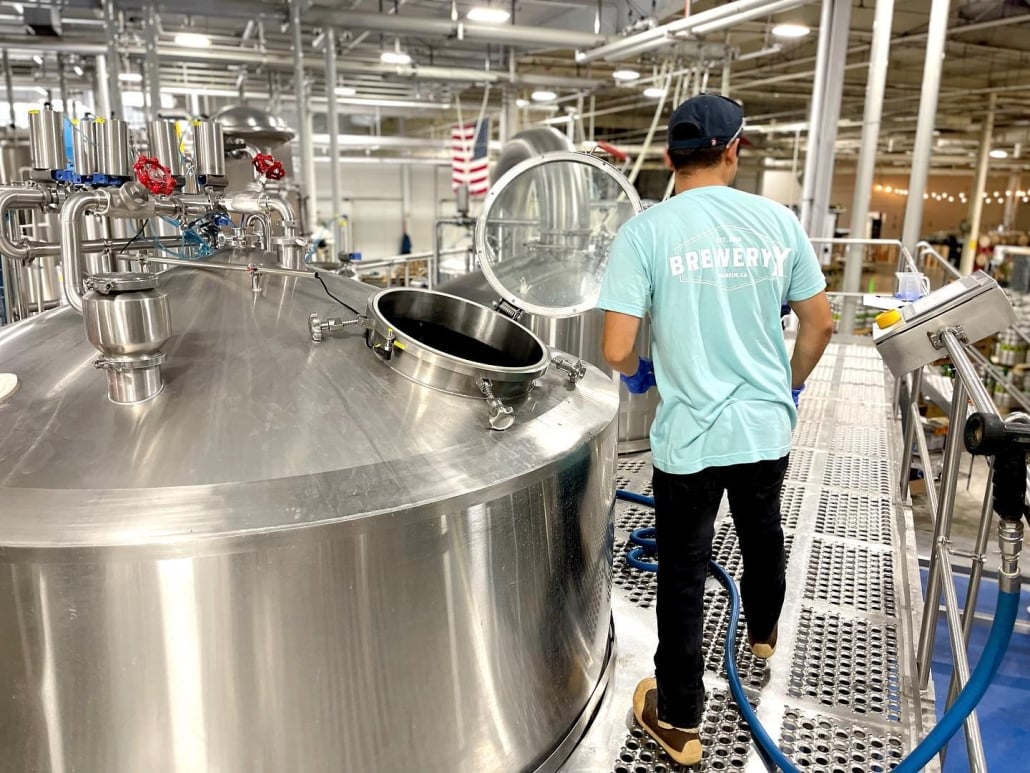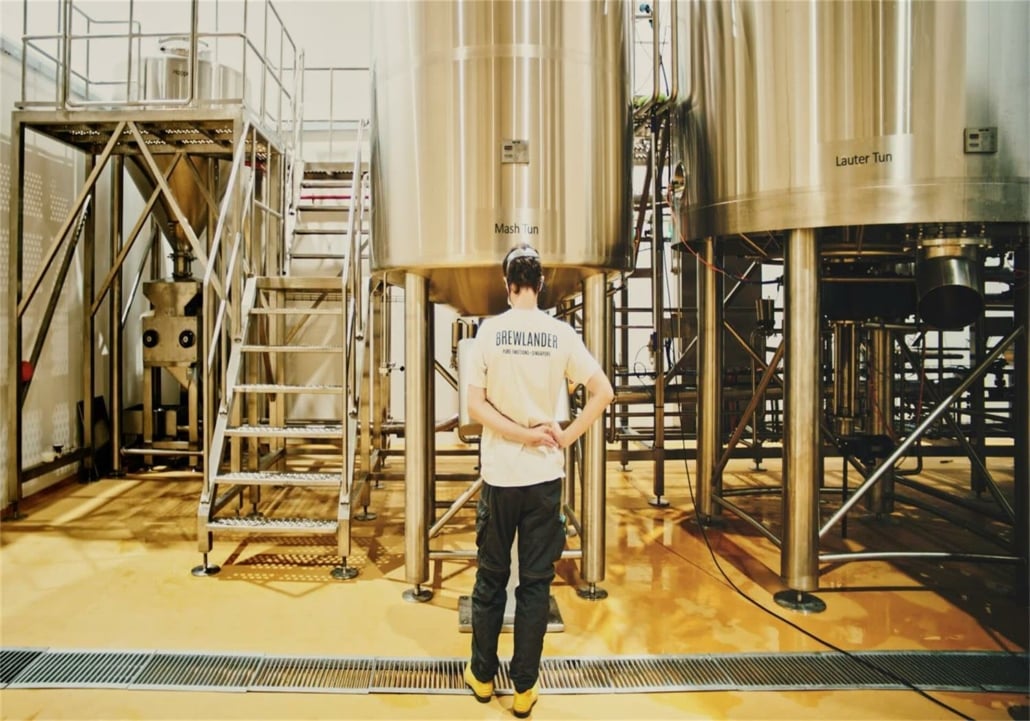The Ultimate Guide to Beer Brewery Equipment
Overview of Beer Brewery Equipment
Beer brewing is more than just a craft; it’s a blend of science and passion. Whether you’re a homebrewer looking to upgrade your setup or a commercial brewer wanting to scale operations, understanding the right equipment is crucial. Investing in proper beer brewery equipment can directly influence the quality of your beer and the efficiency of your brewing process. This guide provides a comprehensive breakdown of brewery systems, including the types of equipment, customization options, operational guidelines, and maintenance tips.
You’ll get a deep dive into everything from fermentation tanks to heat exchangers, with side-by-side comparisons on factors like capacity, design, and price range. So, if you’re wondering where to start or how to expand, you’re in the right place. Ready to brew your dream beer? Let’s explore the essential brewery gear!

The Essential Guide to Beer Brewery Equipment
There are several pieces of equipment involved in the brewing process, and each serves a specific role. Whether you’re looking for something basic or considering high-tech machinery for a full-scale production line, knowing the functions of each component will help you make better choices.
1. Mashing Equipment
At the heart of any brewing system is the mash tun. It’s where the malted barley, along with water, is mixed and heated. This initiates the conversion of starches into fermentable sugars, which will later become alcohol. Mash tuns come in various sizes, depending on your brewing scale, and they’re typically made from stainless steel, which ensures durability and easy cleaning.
2. Lauter Tun
Once the mash is complete, it moves to the lauter tun. This vessel is designed to separate the liquid wort from the grain husks. Efficient lauter tuns ensure minimal wastage of valuable wort, which is key in commercial brewing setups.
3. Kettle and Whirlpool System
After lautering, the wort is transferred to the kettle, where it’s boiled to sterilize the liquid and extract flavors from the hops. A whirlpool system helps in collecting the trub (solid residues like hops and proteins) from the wort after boiling.
4. Fermentation Tanks
This is where the magic happens! Fermentation tanks are where the wort turns into beer as yeast converts the sugars into alcohol. Fermentation vessels come in varying capacities and designs. They are usually cylindrical-conical to facilitate easy removal of yeast.
5. Cooling and Heat Exchange Systems
To properly ferment your beer, you need to cool the wort quickly after boiling. This is where heat exchangers come into play. A good cooling system reduces the risk of contamination while ensuring the wort reaches the desired fermentation temperature quickly.
6. Bottling and Packaging Equipment
Whether you’re brewing for personal consumption or commercial sale, packaging is the final step. Automated bottling systems ensure that beer is properly sealed in bottles, cans, or kegs, maintaining quality until it reaches consumers.
Types of Beer Brewery Equipment: A Detailed Breakdown
Choosing the right type of equipment depends on your brewing goals. Here’s a look at some of the common types of equipment and their key features.
| Equipment Type | Function | Materials | Common Sizes | Customization |
|---|---|---|---|---|
| Mash Tun | Converts malt starch into fermentable sugars | Stainless Steel | 50-10,000 liters | Heating options, size adjustments |
| Lauter Tun | Separates wort from spent grain | Stainless Steel | 100-10,000 liters | Adjustable rake arms, false bottoms |
| Boiling Kettle | Sterilizes wort and extracts hop flavors | Copper/Stainless Steel | 100-20,000 liters | Multi-level heating, whirlpool integration |
| Fermentation Tank | Ferments wort into beer | Stainless Steel | 50-30,000 liters | Single/double jacket, pressure controls |
| Heat Exchanger | Cools wort after boiling | Copper/Stainless Steel | Plate or tube styles | Adjustable cooling rates, modular systems |
| Bottling Line | Packages beer into bottles or cans | Stainless Steel | Customizable sizes | Automated/manual systems |
Beer Brewing Process: Step-by-Step Equipment Guide
Understanding the brewing process helps in selecting the right equipment, ensuring efficient beer production. Let’s break down the process, and explore which equipment you’ll need at each stage.
1. Milling the Grains
Before you can mash, you need to crush the malted barley. Milling machines break the grain husks while leaving the essential components intact. Milling is crucial because improper crushing can lead to poor sugar extraction, affecting the taste of your beer.
2. Mashing the Grain
The mash tun is where you blend your milled grain with hot water. This kicks off the conversion of starches into fermentable sugars. The temperature control is essential during this process as it influences the efficiency of sugar extraction.
3. Lautering
After mashing, the mixture heads to the lauter tun. This is where the wort is separated from the solid grain particles. An effective lauter tun ensures that you’re extracting maximum wort, reducing waste.
4. Boiling and Hopping
Next, the wort is boiled in the kettle. Adding hops during the boil enhances flavor and bitterness while sterilizing the wort. The boil time varies depending on the style of beer you’re brewing.
5. Cooling the Wort
After boiling, the wort needs to be cooled quickly using a heat exchanger. This equipment ensures the wort reaches an optimal fermentation temperature without the risk of contamination.
6. Fermentation
Once the wort is cooled, it’s transferred to fermentation tanks where yeast is added. The fermentation process typically takes a few weeks, depending on the beer style. During this time, the yeast converts sugars into alcohol and carbon dioxide.
7. Filtration and Carbonation
After fermentation, the beer is filtered to remove residual yeast or proteins. Carbonation is also added at this stage if necessary, depending on the beer style.
8. Bottling and Packaging
In the final stage, the beer is transferred into bottles, cans, or kegs using automated or manual packaging systems. Proper sealing ensures the beer retains its quality.
Beer Brewery Equipment: Capacity, Space, Design, and Customization
When choosing equipment, factors like capacity, available space, design preferences, and the ability to customize play a key role. Here’s a breakdown of these parameters.
| Parameter | Details |
|---|---|
| Capacity | Equipment comes in a range of sizes from small-scale home brewing (50 liters) to industrial setups (up to 30,000 liters). |
| Space | You need to account for not only the equipment but also storage for raw materials, cleaning systems, and bottling lines. |
| Design | Many breweries prefer equipment with a modular design, which allows for future expansions. Customizable designs can also reflect a brewery’s branding. |
| Customization Options | Most commercial equipment suppliers offer customization for size, automation, heating methods, and cooling systems, catering to different needs. |
Beer Brewery Equipment Suppliers and Price Range
Selecting a reliable supplier is crucial for securing quality equipment. Price ranges can vary significantly based on capacity, materials, and customization options. Here’s a quick guide to what you might expect from various suppliers.
| Supplier | Price Range | Notable Features |
|---|---|---|
| ABC Brewery Equipment | $10,000 – $500,000 | Customizable, premium stainless steel options |
| BrewTech Co. | $5,000 – $200,000 | Excellent automation integration |
| Xtreme Brew Systems | $15,000 – $600,000 | High-capacity industrial brewing equipment |
| MicroBrew Supply | $3,000 – $150,000 | Ideal for homebrewing and small craft breweries |
Installation, Operation, and Maintenance of Brewery Equipment
Getting your brewery equipment up and running isn’t just a matter of plugging it in. Installation can be a complex process, especially for larger systems. Here’s what to keep in mind.
| Stage | Details |
|---|---|
| Installation | Most large-scale brewing systems require professional installation, including plumbing, electrical, and cooling setups. |
| Operation | Modern systems often come with automated controls, making operation relatively easy, even for large batches. |
| Maintenance | Regular cleaning is essential to avoid contamination. Automated cleaning-in-place (CIP) systems simplify the cleaning process. |
How to Choose a Brewery Equipment Supplier
Picking the right supplier is just as important as selecting the equipment. Here’s a guide on how to choose the best supplier for your brewery.
| Criteria | Details |
|---|---|
| Reputation | Look for suppliers with positive reviews,testimonials, and a track record of delivering quality equipment. |
| Warranty and Support | A good supplier should offer warranties and provide technical support for installation and troubleshooting. |
| Customization | Ensure that the supplier can customize equipment to fit your specific brewing needs and space constraints. |
| Price | Price is important, but balance cost with quality. Cheaper systems may not last as long or provide the same performance. |
Comparing the Pros and Cons of Brewery Equipment
To make the best choice for your brewery, consider the following advantages and limitations of the equipment.
| Equipment | Pros | Cons |
|---|---|---|
| Automated Systems | Faster, more consistent results, reduced labor | High upfront cost, complex to operate and maintain |
| Manual Systems | Lower cost, more control over each brewing step | Time-consuming, labor-intensive |
| Stainless Steel | Durable, easy to clean, corrosion-resistant | More expensive than other materials |
| Copper Equipment | Aesthetic appeal, traditional brewing material | Susceptible to oxidation, harder to maintain over time |

FAQ
| Question | Answer |
|---|---|
| What equipment do I need to start brewing beer? | At the minimum, you’ll need a mash tun, kettle, fermentation tank, and a heat exchanger. Optional equipment includes bottling systems and CIP systems. |
| How much space do I need for a commercial brewery? | It depends on your scale, but even a small craft brewery typically requires at least 1,000 square feet for equipment, storage, and workflow. |
| Is stainless steel the best material for brewing? | Yes, stainless steel is widely considered the best option due to its durability, ease of cleaning, and resistance to corrosion. |
| How long does it take to brew beer? | Brewing typically takes several hours, but the fermentation process can last anywhere from one week to several months, depending on the style. |
This article covers the essentials of beer brewery equipment and how to choose the right setup for your brewing needs. Whether you’re a hobbyist or running a large brewery, having the proper equipment is essential for quality, efficiency, and scaling your production.
Share this entry
Interested in learning more about Brewing Systems including additional details and pricing information? Please use the form below to contact us!
YOLONG BREWERY EQUIPMENT FAQS
- Commercial Brewery / Craft Brewery / Microbrewery / Nanobrewery
- What is The Difference Between Craft Beer and Industrial Beer?
- The Bespoke Differences In Custom Brewing Systems
- Everything You Need to Know About Kettle Souring
- How to Choose Brewing Equipment for Your business?
- How To Choose The-Best Partner To Build Your Commercial Microbrewing System?
- Two Detection Sensors That You Need To Use In Your Brewhouse System
- Remote Control Applications in Brewing Equipment/How does it work?
- How To Clean Your Brand New Brewery Tanks?

